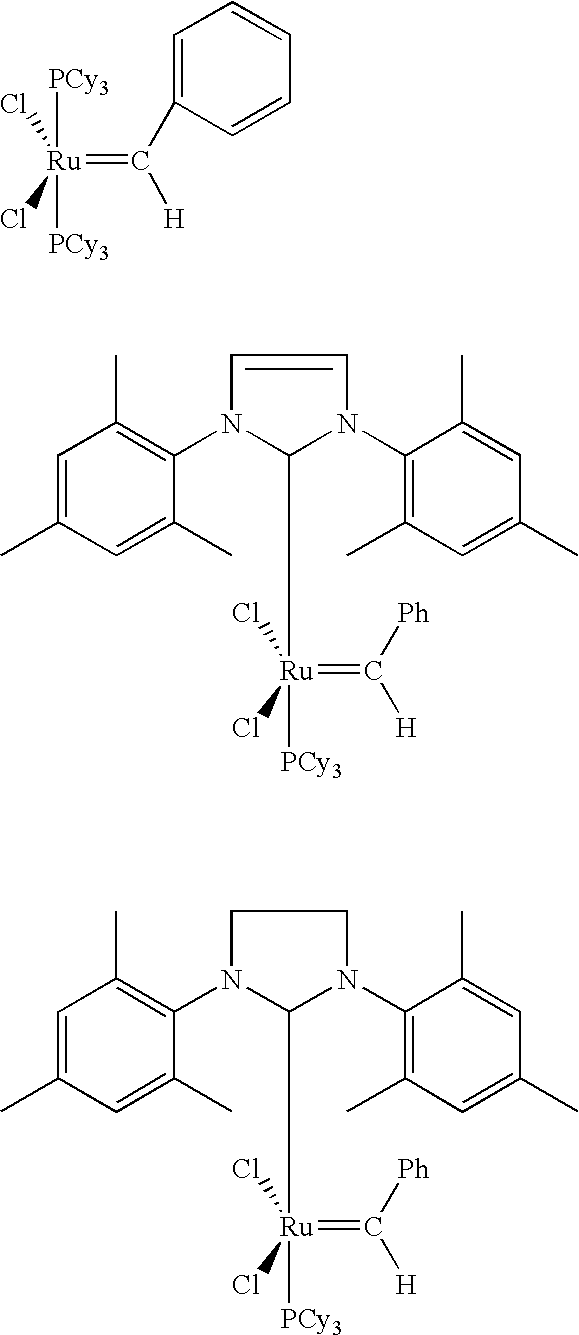Olefin conversion process and olefin recovery process
a technology of olefin conversion and recovery process, which is applied in the direction of hydrocarbon by metathesis reaction, hydrocarbon preparation catalyst, organic chemistry, etc., can solve the problems of difficult separation of olefins by means such as distillation, and achieve the effect of increasing the boiling point difference of olefins and being easy to separa
- Summary
- Abstract
- Description
- Claims
- Application Information
AI Technical Summary
Benefits of technology
Problems solved by technology
Method used
Image
Examples
examples
[0091]In these examples, higher boiling internal olefin products, which are mid-chain internal olefins, are made by allowing an internal olefin to self-metathesize over a non-isomerizing catalyst under non-equilibrium conditions where the lower boiling internal olefin product is flashed off as it is formed. The higher boiling internal olefin product (mid chain internal olefins) is separated from the paraffins by distillation, thereby producing a desired mid-chain olefin product with a higher carbon number (C14) than the feed internal olefin and an olefin product with a lower carbon number (represented below by —C4) than the feed internal olefin as shown in equation 1 below,
[0092]Table 1 describes the conditions and results for a number of experiments which are carried out using an 11 percent by weight Re / Al2O3 catalyst as the metathesis catalyst.
[0093]Examples 1, 3 and 5 utilize NEODENE® 1112 olefin (an internal olefin containing a mixture of C11 and C12 internal olefins) as the int...
PUM
| Property | Measurement | Unit |
|---|---|---|
| boiling points | aaaaa | aaaaa |
| boiling points | aaaaa | aaaaa |
| temperature | aaaaa | aaaaa |
Abstract
Description
Claims
Application Information
 Login to View More
Login to View More - R&D
- Intellectual Property
- Life Sciences
- Materials
- Tech Scout
- Unparalleled Data Quality
- Higher Quality Content
- 60% Fewer Hallucinations
Browse by: Latest US Patents, China's latest patents, Technical Efficacy Thesaurus, Application Domain, Technology Topic, Popular Technical Reports.
© 2025 PatSnap. All rights reserved.Legal|Privacy policy|Modern Slavery Act Transparency Statement|Sitemap|About US| Contact US: help@patsnap.com


